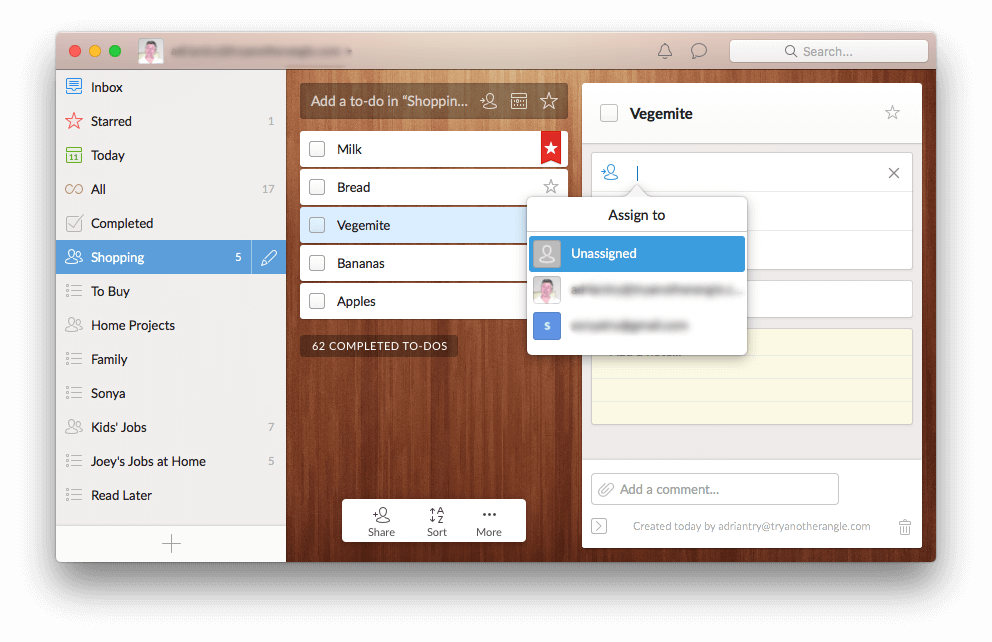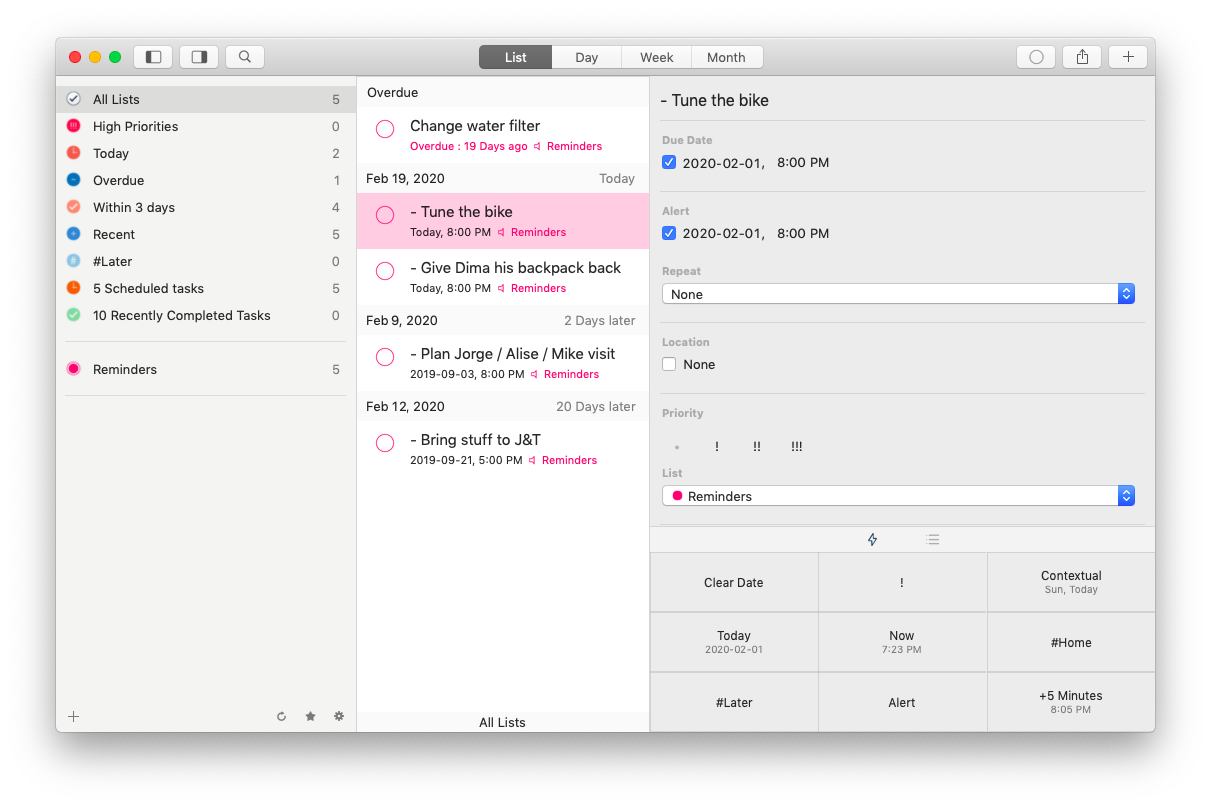
- #TO DO LIST APP FOR MAC FOR MAC#
- #TO DO LIST APP FOR MAC INSTALL#
- #TO DO LIST APP FOR MAC SOFTWARE#
- #TO DO LIST APP FOR MAC OFFLINE#
#TO DO LIST APP FOR MAC INSTALL#
So by allowing users to install Netflix on Macs, they’ll be able to download content through the app on desktop, which Netflix doesn’t want - for whatever reason.
#TO DO LIST APP FOR MAC OFFLINE#
Their desktop website offers no offline caching solution. Netflix only allows subscribers to download series and movies on their mobile apps. It also stops users from taking advantage of features exclusive to the mobile app, such as downloading Netflix content.

Hence developers block downloads on Macs to spare themselves the headaches caused by angry users. They want to maintain their desktop website only, rather than having to deal with a desktop app that was originally designed for a mobile device. These companies that are restricting their mobile apps from running on an M1 Mac almost always have a separate web or desktop app. So, once users start facing these Mac-exclusive bugs and issues, they’ll head over to the support channels to report them to the companies and ask for fixes. That’s because the developers didn’t intend for their app to run on a big screen. They’re available to download and run, but bugs, mostly ones related to their UIs and layouts, are to be expected. First, you should know that mobile apps that aren’t specifically optimized for the Mac might not work as expected. If you’re wondering “why do devs care so much about where I install their app if I’m subscribing to or buying it anyway?!”, it’s because it can cause some complications. As long as developers allow it, you should be able to download and run your favorite mobile apps on your M1 Mac. So Apple has provided developers with an option to choose whether an iOS/iPadOS app can be downloaded on an M1 Mac or not. Developers have the right to choose whether they want their mobile app(s) to be deployed on desktop computers. I think we can all agree that restrictions suck, but they’re there for a reason. Now you may be wondering why some of your favorite apps, like Netflix and YouTube, aren’t showing up. And if you have already bought some apps on an iPhone, then you can view these purchases on your M1 Mac and re-download them on it. Once you pick a mobile app of your choice, you can buy and download it as you normally would do on an Apple device. Note that you can manually switch between both sections yourself at any time.
#TO DO LIST APP FOR MAC FOR MAC#
However, if there aren’t enough search results for Mac Apps, then it switches to iPhone & iPad apps.

It defaults to the former, since Mac apps obviously work better on macOS than iOS/iPadOS apps. The Mac App Store search results page now has two sections - “Mac Apps” and “iPhone & iPad Apps”. It’s as effortless and convenient as it can get. You just install the mobile app and run it on the spot.
#TO DO LIST APP FOR MAC SOFTWARE#
This means you don’t need to install any software or emulators to run iOS and iPadOS apps on macOS. One of the most known characteristics of the Apple M1 chip is its ability to run apps designed for iPhone and iPad natively.


If you’ve bought or plan on buying an M1 Mac, you must be wondering what to do with it. This only proves how the M1 is the beginning of something significantly brighter for Apple. It’s so energy-efficient to the point of Apple literally removing the cooling fans from the M1 MacBook Air models. Particularly designed for the Mac, the M1 chip offers tremendous power while running efficiently, energy-wise. On the 10th of that month, Apple announced its own SoC (system-on-chip), the M1 chip. However, that all changed about a year ago in November 2020. For a long time, Apple depended on Intel to provide processors for its Macs.



 0 kommentar(er)
0 kommentar(er)
